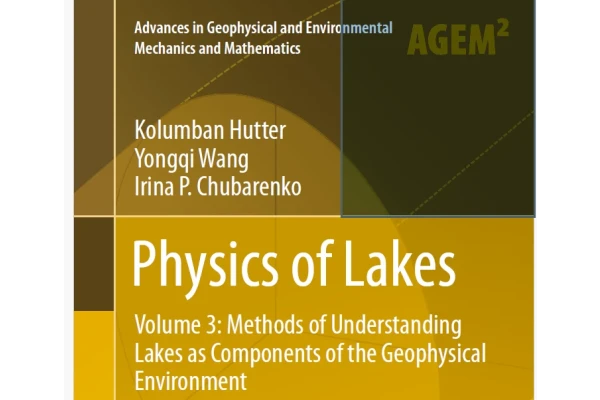
Physics of Lakes: Volume 3: Methods of Understanding Lakes as Components of the Geophysical Environment
نوع فایل: PDF
حجم: 29.00 مگابایت
ناشر: Springer International Publishing
سال: 2014
ویرایش: 1
زبان: انگلیسی
The ongoing thread in this volume of Physics of Lakes is the presentation of different methods of investigation for processes taking place in real lakes with a view to understanding lakes as components of the geophysical environment. It is divided into three parts. Part I is devoted to numerical modeling techniques and demonstrates that (i) wind-induced currents in depth-integrated models can only adequately predict current fields for extremely shallow lakes, and (ii) that classical multi-layered simulation models can only adequately reproduce current and temperature distributions when the lake is directly subjected to wind, but not the post-wind oscillating response. This makes shock capturing discretization techniques and Mellor-Yamada turbulence closure schemes necessary, as well as extremely high grid resolution to reduce the excessive numerical diffusion. Part II is devoted to the presentation of principles of observation and laboratory experimental procedures. It details the principles of operation for current, temperature, conductivity and other sensors applied in the field. It also discusses the advantages and limitations of common measuring methods like registration from stationary or drifting buoys, sounding and profiling from a boat, etc. Questions of data accuracy, quality, and reliability are also addressed. The use of laboratory experiments on a rotating platform is based on an exposition of dimensional analysis and model theory and illustrated using Lake Constance as an example. Part III gives an account of the dynamics of lake water as a particle-laden fluid, which, coupled with the transport of the bottom sediments, leads to morphodynamic changes of the bathymetry in estuarine and possibly whole lake regions. An elegant spatially one-dimensional theory makes it possible to derive analytic solutions of deltaic formations which are corroborated by laboratory experiments. A full three-dimensional description of the evolution of the alluvial bathymetry under prescribed tributary sediment input indicates a potential subject for future research.
دیدگاه خود را ثبت کنید